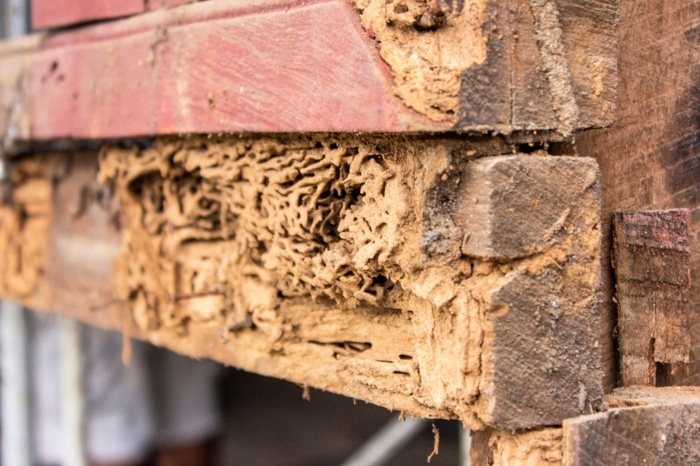Imagine waking up to a series of itchy welts on your skin, a surefire sign of an uninvited guest in your home – the bed bug. These tiny, nocturnal creatures have been the bane of human existence for centuries, causing discomfort and distress wherever they are found. But what are bed bugs, and why have they become such a widespread problem in modern households?
Understanding Bed Bugs
Bed bugs, or *Cimex *, are small, reddish-brown insects that feed on the blood of humans and animals while they sleep. They’re about the size of an apple seed and can hide in the smallest of crevices, making them difficult to detect. Bed bugs are not a result of poor hygiene or cleanliness; rather, they are seasoned hitchhikers that can easily travel from place to place on clothing, luggage, or furniture.
Their resurgence in recent years can be attributed to increased global travel and resistance to common pesticides. Contrary to popular belief, bed bugs don’t transmit diseases, but their bites can lead to allergic reactions and secondary infections due to scratching. The psychological impact, however, is often as severe as the physical, leading to sleeplessness and anxiety in infested households.

Don’t Let Bed Bugs Take Over!
Common Bed Bug Habitats
Bed bugs thrive in places where they have easy access to their food source – human blood. This typically includes bedrooms, hotels, and other sleeping areas, but they can be found almost anywhere people congregate, such as movie theatres, public transport, and office buildings.
One peculiar question that often arises is the presence of bed bugs in less common places like toilets and bathtubs. While these aren’t typical bed bug habitats, they sometimes end up there when trying to escape after feeding. The smooth surfaces of toilets and bathtubs make it difficult for them to escape, leading to their discovery in these unusual places.
Bed Bugs in Unusual Places: Toilet and Bathtub Mysteries
Delving deeper into the query, “Why do I keep finding bed bugs in my bathtub?” It’s important to understand that bed bugs are attracted to warmth and carbon dioxide emitted by humans. However, they are not aquatic and do not seek out water sources like other pests might. Finding them in a bathtub or toilet usually indicates a severe infestation where they are dispersed throughout the home, seeking new hiding spots.
These occurrences can be perplexing and alarming to homeowners. In my personal experience, a friend once panicked after finding a bed bug in her bathtub, fearing an infestation in her plumbing system. However, upon further inspection, it turned out that the bed bugs were travelling from her bedroom to other parts of the house, accidentally ending up in the bathtub. This highlights the importance of understanding their behaviour – bed bugs are not drawn to water but may end up in bathrooms as they move around in search of new hiding spots.
Bed Bugs and Pets
When it comes to bed bugs, pets are often a topic of concern. A common question is, “Can bed bugs live in cat litter?” The answer is somewhat complex. While bed bugs prefer human hosts, they can occasionally be found in pet bedding or nearby areas, including cat litter boxes, especially if these areas are close to where the pets sleep. However, they do not live in the litter itself as it does not provide the warm, carbon dioxide-rich environment they thrive in. Instead, they may temporarily hide there while moving between feeding locations.
It’s essential to monitor your pets for signs of bed bug bites, such as unexplained scratches or irritations. Remember, while bed bugs don’t live on pets like fleas or ticks, they can bite them. In my experience, a neighbour once mistook bed bug bites on her cat for flea bites, not realising her home was infested with bed bugs. Regular cleaning of pet bedding and areas where they rest is crucial in preventing any potential bed bug problems.
Natural Remedies and Prevention
Moving on to prevention and natural remedies, eucalyptus oil has gained attention as a potential bed bug repellent. “Eucalyptus Oil for Bed Bugs: A Natural Repellent?” explores this possibility. While eucalyptus oil may have a repelling effect due to its strong scent, it is not a foolproof solution for a bed bug infestation. It can, however, be used as a part of an integrated pest management approach, especially for preventive measures.
There are other home remedies that can be used to deter bed bugs, like maintaining a clean and clutter-free environment, regularly washing and heat-drying bed linens, and using bed bug-proof mattress encasements. However, it’s crucial to remember that these methods are more preventive than curative. If an infestation is suspected, professional extermination is often the most effective solution.
Bed Bug Eradication Methods
One of the more unusual queries in bed bug eradication is, “Can Hand Sanitizer Kill Bed Bugs?” The high alcohol content in hand sanitizers can indeed kill bed bugs on contact. However, this method is not practical for treating an infestation. Bed bugs hide in inaccessible places, making it impossible to reach them all with a hand sanitizer spray. Moreover, hand sanitizer is a fire hazard and should not be used as a pesticide.
For effective bed bug eradication, a combination of chemical treatments and heat treatments is often recommended. Professional exterminators use a range of methods, including pesticides, heat treatments, and steam cleaning, to effectively eliminate bed bugs at all life stages. DIY methods, like vacuuming and applying diatomaceous earth, can complement these professional treatments but are rarely sufficient on their own.
Legal and Social Aspects of Bed Bug Infestations
“Can Bed Bugs Be Considered Neglect?”
In some cases, persistent bed bug problems in rental properties can be viewed as landlord neglect, especially if proactive measures are not taken to address the issue. It’s important for tenants to report infestations promptly and for landlords to respond with appropriate pest control measures.
The social stigma attached to bed bugs often leads to misconceptions that they are associated with dirty or poor living conditions. This stigma can result in embarrassment and a reluctance to seek help, exacerbating the problem. Understanding that bed bugs are not a sign of neglect or poor hygiene is crucial in dealing with infestations effectively and without undue shame.

Human Interactions and Bed Bug Transmission
The question “Can You Get Bed Bugs from Hugging Someone?” may sound far-fetched, but it’s grounded in the basic understanding of how bed bugs spread. The truth is, while bed bugs are not transmitted directly from person to person like lice, they can hitch a ride on clothing, bags, or other personal belongings. This means that close contact, such as hugging, could potentially facilitate their transfer if one’s clothing is infested.
A humorous yet illustrative example is when a friend hugged me at a gathering, and later we found a lone bed bug on my jacket. It turned into a light-hearted joke about ‘hug-transmitted’ bed bugs, but it also served as a real-life reminder of their sneaky mobility. To minimise the risk, it’s a good practice to regularly inspect and clean clothing, especially after visiting public places or using shared laundry facilities.
Bed Bug Reproduction and Lifecycle
Understanding the reproductive cycle of bed bugs is crucial in controlling their spread. A ‘pregnant bed bug,’ more accurately a female bed bug ready to lay eggs, can lay hundreds of eggs over her lifetime. These eggs, often hidden in tiny crevices, hatch into nymphs, which go through several moltings before becoming adults.
This rapid reproductive rate is one reason why bed bug infestations can escalate quickly if not addressed early. It’s not uncommon to find a few bed bugs one week and then face a full-blown infestation the next. Early detection and continuous monitoring are key to preventing their proliferation.
Real Estate and Bed Bug Challenges
“Bought a House with Bed Bugs” is a daunting scenario that new homeowners might face. This situation requires immediate attention, as bed bugs can spread rapidly throughout a home. It’s advisable to contact a professional pest control service before moving in. They can assess the extent of the infestation and implement a comprehensive eradication plan.
An anecdote that comes to mind is of a couple who bought their dream home, only to discover a bed bug infestation. They tackled the issue head-on with professional help, turning a nightmare scenario into a learning experience and ultimately a comfortable, bug-free home. This underscores the importance of thorough inspections and prompt action in real estate transactions involving bed bugs.
Conclusion
Bed bugs are a nuisance, but with the right knowledge and approach, they can be effectively managed and eradicated. Whether you’re dealing with an unexpected infestation, curious about prevention methods, or just want to understand these pests better, remember that bed bugs are a common problem that can be solved with patience and the right strategy. Don’t let these nighttime nuisances disturb your peace of mind. If you suspect a bed bug problem, take action early, and consider professional help to ensure your home remains a comfortable and bug-free zone. And remember, keep calm and don’t let the bedbugs bite!





